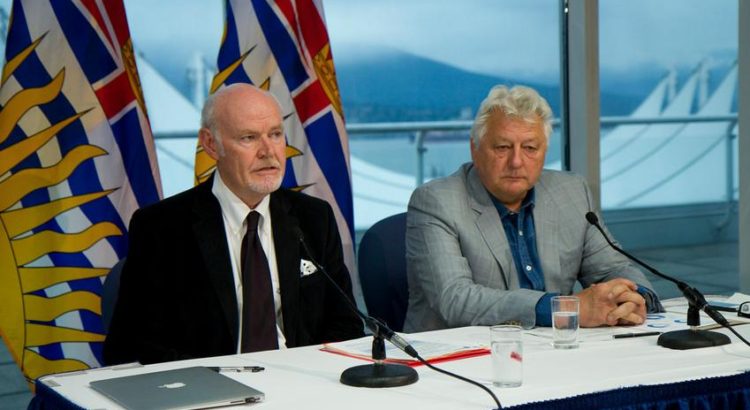América del Norte/Canada/theprovince.com
Resumen:
El Tribunal Supremo de Canadá emitió la sorpresiva decisión sobre el caso de número de alumnos por salón,así como el número de profesores especialistas y el número de alumnos con necesidades especiales que pueden estar en un salón de clases. El BCTF estima que podría significar la adición de $ 250 millones a $ 300 millones para el presupuesto anual de la escuela de BC $ 5.1 mil millones – a pesar de los superintendentes escolares estiman tanto como $ 1 mil millones en el 2014.
The Supreme Court of Canada’s surprise decision on the B.C. Teachers’ Federation class size and composition court case has both teachers and government scrambling to figure out next steps in the long-running battle.
The ruling restores contract language from 2002 on class size limits, as well as the number of specialist teachers and the number of students with special needs that can be in a classroom. The BCTF estimates it could mean adding $250 million to $300 million to B.C.’s $5.1-billion annual school budget — though school superintendents estimated as much as $1 billion in 2014.
Both sides had expected the Supreme Court to deliberate on the issue for months, but its 20-minute turnaround siding with teachers has left the union and province wading through reams of dense contractual language, which, printed off, stands almost 10 centimetres thick on double-sided paper. There’s a master contract covering province-wide issues, as well as local agreements with the 60 separate school districts. Preliminary estimates indicate 1,400 clauses would be reinstated.
The challenge will be how to implement those clauses, given they are different throughout the province. Many teachers may need to be hired and classrooms created or portables built. Some terminology (such as the definition of a student with special needs) and other aspects (such as the creation of middle schools in some districts in B.C.) have changed significantly since 2002.
The teachers’ contract says that the parties will reopen the part of the collective agreement that deals with the education fund, which was created to support classrooms with many children or those with special needs. The two parties will bargain from the restored language and the education fund will continue in effect until there is agreement on implementation or changes to the restored language.
“The only negotiating … will be around what implementation looks like. Justice (Ian) Donald was very clear that the language is restored,” BCTF president Glen Hansman said. “We’re not saying everything is going to be switched on like a light switch. We are open to staging things in a reasonable and orderly way.”
When asked if the teachers would consider standardizing the clauses across the province, Hansman said the teachers did offer a deal with province-wide language in 2011, but that the province wasn’t interested. The province’s bargaining agent, B.C. Public School Employers’ Association, said it tried to offer province-wide language in 2014 negotiations.
Education Minister Mike Bernier said both sides will meet in the near future.
“The 2002 language would apply differently to each of the 60 collective agreements across the 60 school districts — keeping in mind we are now in a 2016 system,” Bernier said. “I expect both sides will want to take some time to consider this while also respecting the direction for appropriate and open-minded consultation.”
Opposition NDP leader John Horgan rejected the idea that the complexity of the 2002 language could delay a resolution between the BCTF and government.
“I’ve always maintained that perfection is the enemy of progress and there’s nothing complicated about investing in public education,” he said.
“The spinners at Liberal HQ would be delighted to say to the public and parents, ‘Well, boy, this is sure tough and we’ll have to work hard at this.’ … Well it wasn’t that complicated for the judges, it’s not that complicated for the public to figure out either.”
Hansman said he doesn’t expect the discussions to reach an impasse, but that if they do, the teachers will do whatever they need to.
“We’re not fools. We’ve been through this before and government has already tried the same trick twice and has been found not only to have imposed unconstitutional legislation twice, but there was also a finding of bad faith negotiations,” Hansman said.
“It would be very unwise for a government to proceed similarly for a third time.”
Joel Bakan, a professor at the Allard School of Law at the University of B.C., said if disputes arise in the discussion, they would not go directly back to the Supreme Court of Canada, but would go though the normal labour relations dispute-resolution processes.
Fuente: http://www.theprovince.com/news/local+news/teachers+government+scrambling+analyze+impact+supreme+court/12400671/story.html
Imagen tomada de: http://www.bcbusiness.ca/What-does-the-Supreme-Court-decision-on-class-sizes-really-mean








 Users Today : 16
Users Today : 16 Total Users : 35460147
Total Users : 35460147 Views Today : 28
Views Today : 28 Total views : 3418811
Total views : 3418811